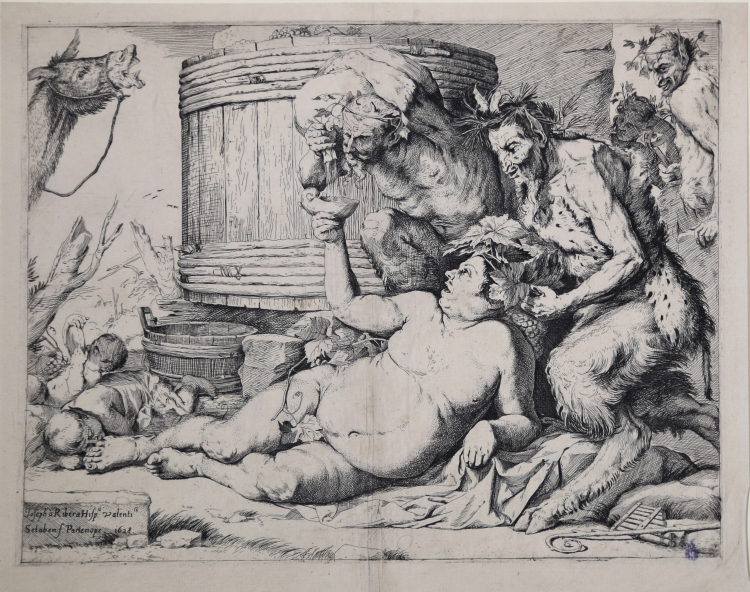




| Reference: | S31291 |
| Author | Cerchia di RIBERA |
| Year: | 1640 ca. |
| Measures: | 346 x 248 mm |



| Reference: | S31291 |
| Author | Cerchia di RIBERA |
| Year: | 1640 ca. |
| Measures: | 346 x 248 mm |
Etching and engraving, circa 1640, no signature.
Magnificent proof, rich tone, printed on contemporary laid paper with watermark "bunch of grapes", with margins, vertically fold of paper, otherwise in excellent condition.
The work depicts the etching by Ribera, in respect of which is exactly a copy, as evidenced by the fact that in the cartouche in the lower left corner are retained the author's name and the date 1628.
The plate reproduce a painting in the same direction that Ribera created in 1626 for the merchant and collector Gaspar de Roomer, currently housed in the Capodimonte Museum in Naples.
Likely that this work may ascribed to the publisher and print dealer Frans van den Wyngaerde (1614-1679).
Beautiful proof. Ex collection H. Fliescher (Lugt 1362b).
|
Bartsch 13; Brown 14, copia 1; Costamagna, Incisori Napoletani del ’600, 36. Dimensioni 346x248.
|
Cerchia di RIBERA (Iativa di Valenza 1591 – Napoli 1652)
|
Spanish painter and printmaker, active in Italy. He was one of the most important figures in European painting in the 17th century and one of the major artists of the Counter-Reformation. Though Spanish, he spent his entire career in Italy, and his evolution reflected developments in Italian art at that time. His first works show the influence of northern followers of Caravaggio active in Rome. He subsequently incorporated elements of Venetian art and, in his last works, combined all the sensual and colourist opulence of both Venice and Flanders, creating new and highly personal compositions.
|
|
Bartsch 13; Brown 14, copia 1; Costamagna, Incisori Napoletani del ’600, 36. Dimensioni 346x248.
|
Cerchia di RIBERA (Iativa di Valenza 1591 – Napoli 1652)
|
Spanish painter and printmaker, active in Italy. He was one of the most important figures in European painting in the 17th century and one of the major artists of the Counter-Reformation. Though Spanish, he spent his entire career in Italy, and his evolution reflected developments in Italian art at that time. His first works show the influence of northern followers of Caravaggio active in Rome. He subsequently incorporated elements of Venetian art and, in his last works, combined all the sensual and colourist opulence of both Venice and Flanders, creating new and highly personal compositions.
|